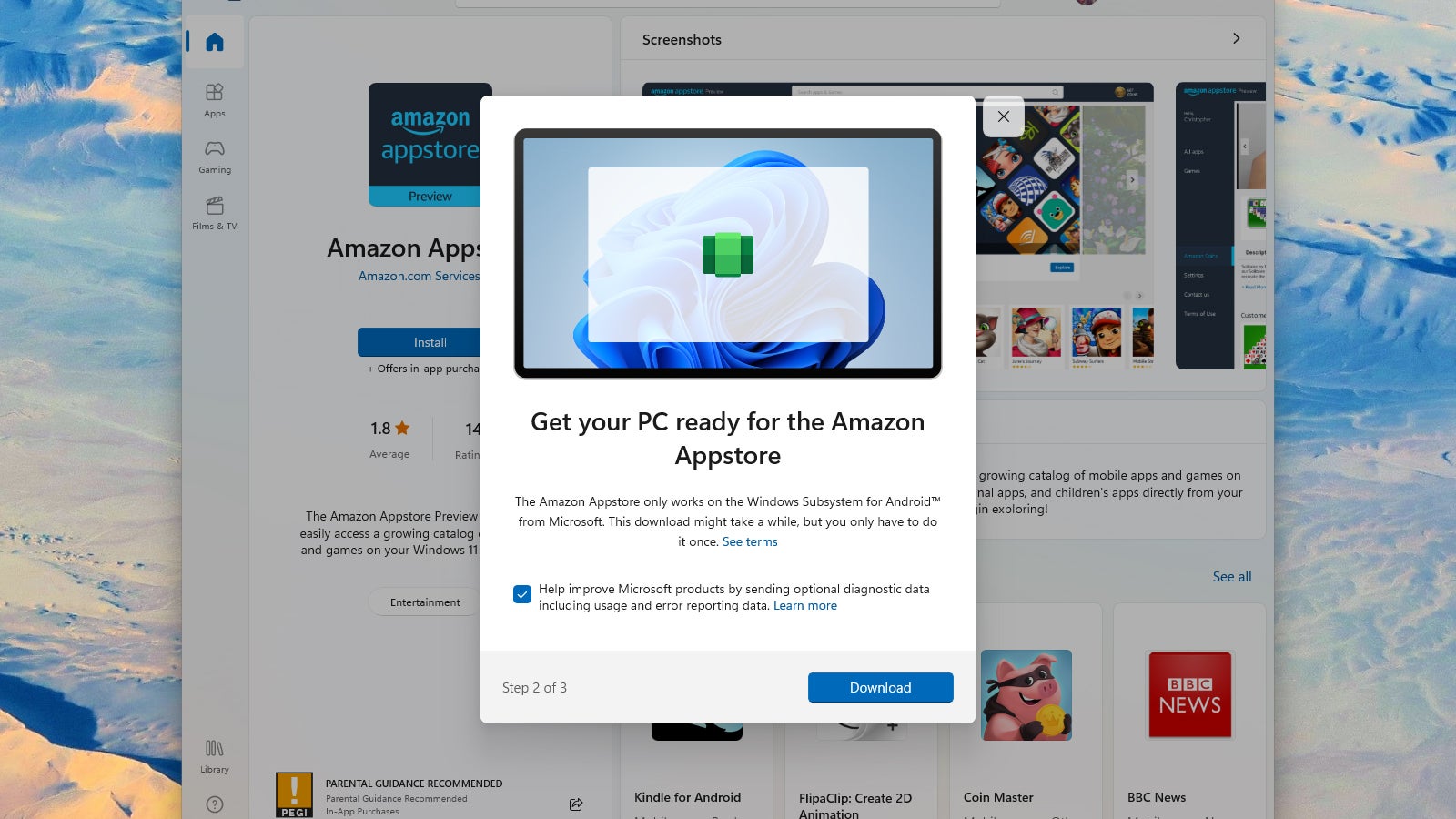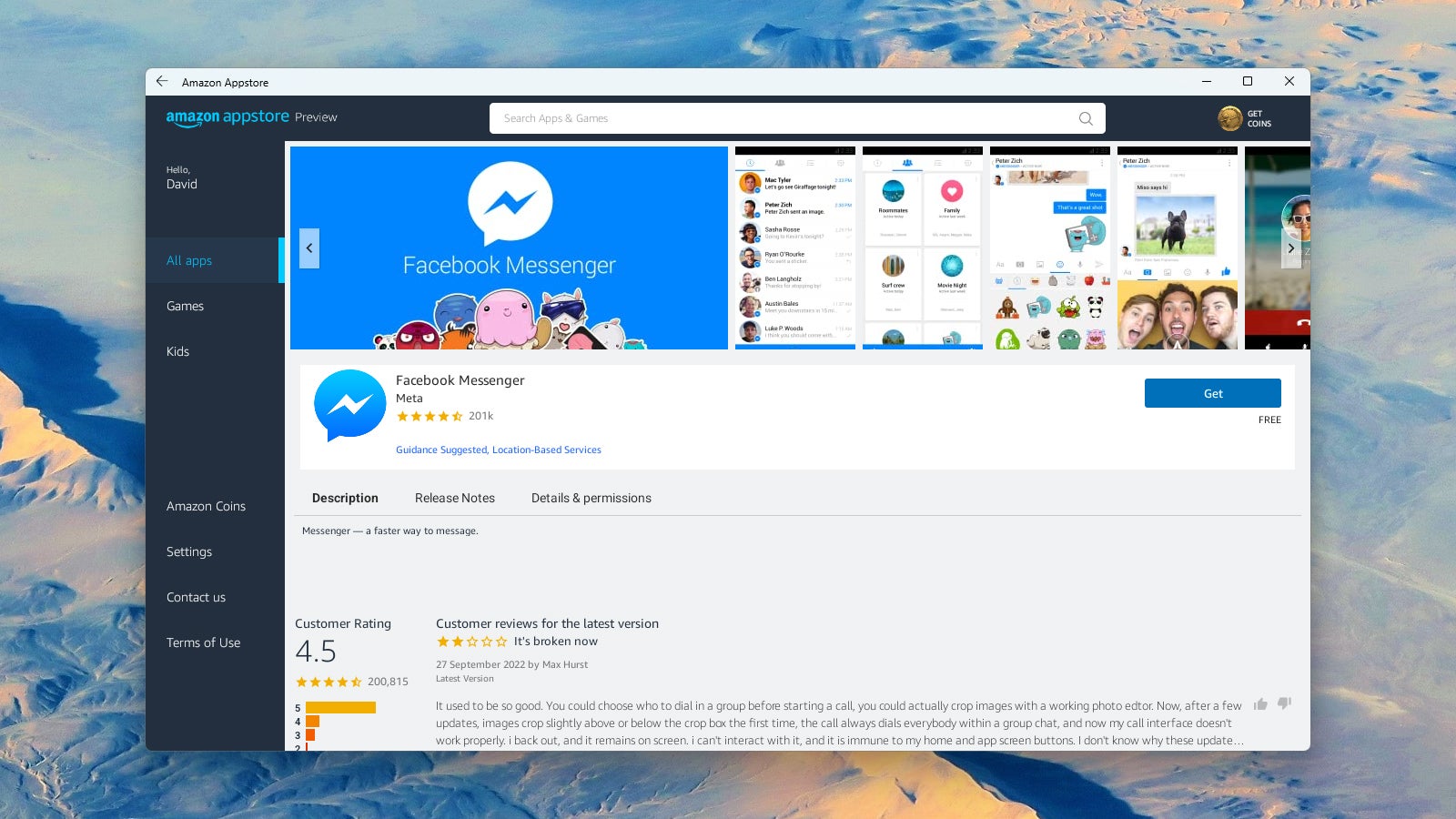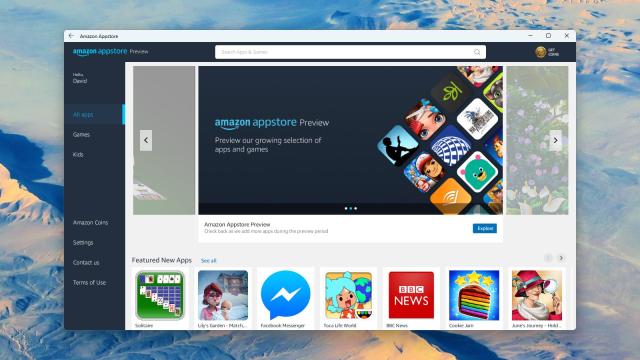Android apps have arrived on Windows 11… sort of. The feature is still being labelled as a ‘preview’ for the time being, and you’re limited to apps from the Amazon Appstore (not the Google one), but it’s open to everyone and it doesn’t take long to get started. Here, we’ll take you through the steps of installing Android apps on your Windows 11 computer.
The appeal is clear: Being able to load up Android apps and games while leaving your phone in your pocket. Your PC gives you more screen space and all the convenience of keyboard and mouse inputs, so there are plenty of reasons why you would want to get your most-used apps up on a desktop interface.
To get started, you need to install the Amazon Appstore from inside the Microsoft Store. Open the Microsoft Store from the Start menu, then search for “Amazon Appstore”: Select the Appstore when you find it, then click Get to put it on your system — you’ll need to go through a few confirmation screens and wait several minutes while the necessary virtualization technologies are set up.

If you’re interested in what’s happening behind the scenes here, the Amazon Appstore for Windows 11 runs on a platform called the Windows Subsystem for Android (WSA) — that platform combines a Linux kernel with version 11 of the Android Open Source Project (AOSP), without any of the trimmings that Google offers for its Pixel devices.
You can then launch Amazon’s portal of Android apps from the Start menu, a portal which will be familiar to anyone with experience on an Amazon Fire tablet. You’re also going to need to log in with an Amazon account, so if you don’t have one (or don’t want to use your existing one), you’ll need to sign up inside the Appstore.

The Amazon Appstore isn’t difficult to get around: You can use the search bar at the top to look for specific apps and games, or start browsing through the categories that show up as you scroll down the store front. When you see something you like, click on its thumbnail for a closer look, then select Get to install it and Open to launch it.
Android apps that you’ve installed through the Amazon Appstore will show up on the Start menu, like any other app — you don’t need to go back through the Appstore every time you want to run the app. The process for uninstalling these apps is the same as usual as well (via Apps and Apps & features in the Windows Setting pane).
Right now, the app selection is pretty paltry, and you might struggle to find apps that are actually useful. Apps that are available on Fire tablets, including Instagram and Dropbox, are nowhere to be seen on Windows — this seems to be tied into the current ‘preview’ status of the feature on Windows 11 at the moment, so we’re hoping that a better app selection will be along soon.

Even with a full strength Amazon Appstore, this isn’t the Google Play Store, and you won’t find anything made by Google here (including YouTube). It is possible to hack Windows 11 to run the Google Play Store, but it’s a complicated process that requires a degree of coding knowledge, and at the moment it’s not worth it for most people.
Click Settings on the left and you can customise various aspects of the Amazon Appstore experience, including how download notifications are handled and whether or not apps are able to update themselves automatically. Some basic parental controls are included here too as well, in case you’re worried about any kids with access to your PC running up large bills on your Amazon account.

Speaking of in-app purchases, you’ll see references to Amazon Coins inside the Appstore. These coins are a virtual currency that you can use to purchase apps and items inside apps — you can buy them in bulk to get them more cheaply, and you will occasionally see them offered for free as part of promotions. These coins don’t have an expiry date, so you don’t have to worry about using them before a particular date.
Gaming is perhaps where the Amazon Appstore on Windows 11 is strongest for at the moment, and there are quite a few simple games to help you pass the time of day. Other apps of note include Facebook Messenger, the BBC Sounds podcast portal, and the Audible and Kindle apps offered by Amazon itself. There’s clearly still a long way to go here, though, and lots more to come.
It’s worth bearing in mind that there are alternative options for getting your phone apps up on your computer, whether that’s through running a web version of a particular app in a browser, or using one of the different emulator programs that are out there. Point is, your smartphone apps don’t necessarily have to stay stuck on your smartphone.
